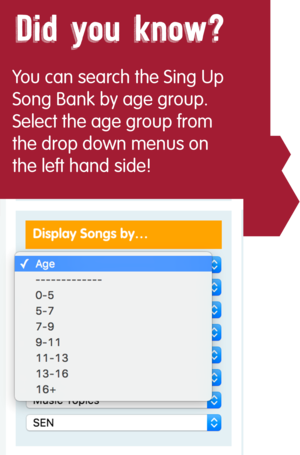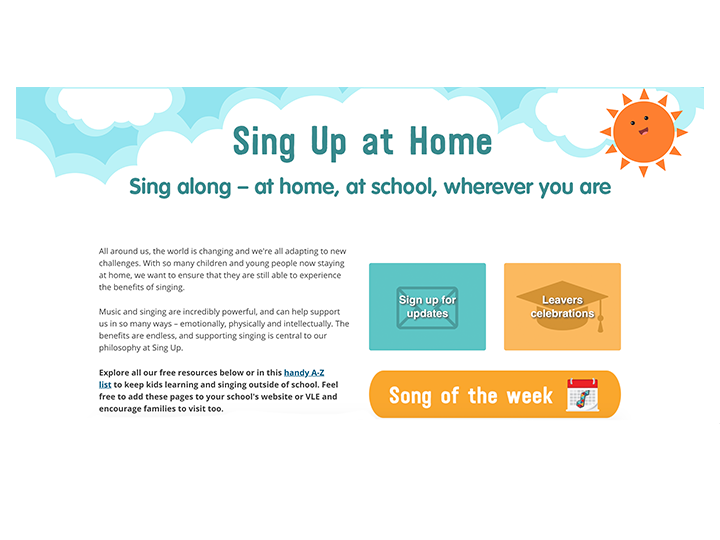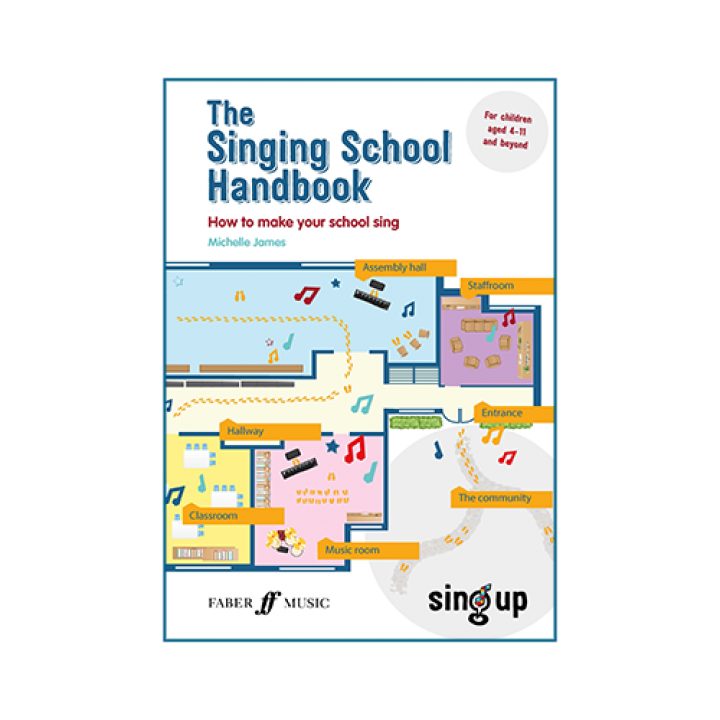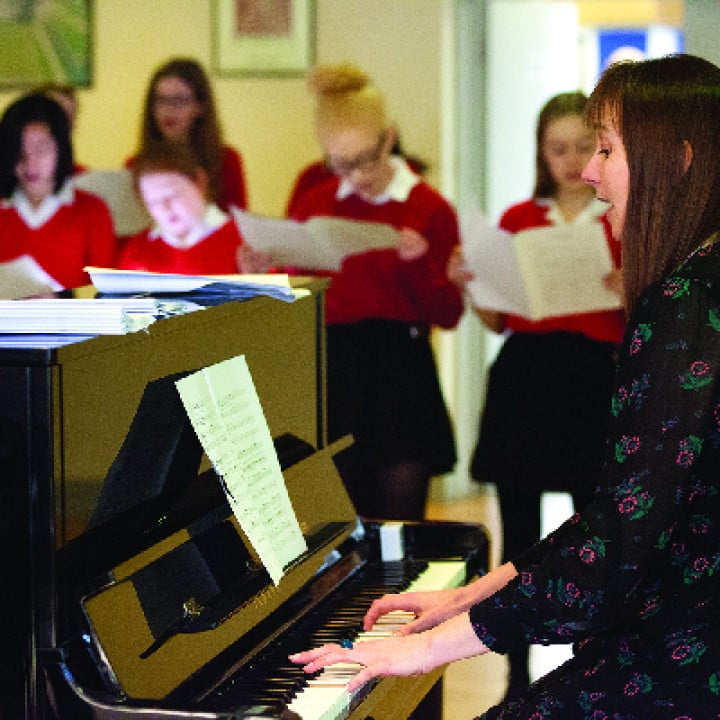
This guide aims to help you choose and teach songs for different age groups. Remember, though, you know your pupils' abilities and interests - plus your own skills and comfort zones - so adapt the below to suit you!
SINGING WITH 4-7 YEAR-OLDS
Click here for Song Bank songs and warm-ups for 4-7 year olds.
- Lyrics that inspire actions and movement help children develop their sense of pulse, rhythm and word recall. Choose songs with few words and lots of repetition.
- Children have much higher voices than adults so it's REALLY important to sing in their range. Go for songs with a tiny range (middle C to A) and a few notes that move in small intervals.
- Chants, rhymes, echo and action songs all work well here.
- If you can hold a tune, then model singing in your classroom - you don't have to have the greatest voice; just lots of enthusiasm! If you really can't sing in tune, use Sing Up's performance and echo tracks - but make sure they aren't too loud; you need to hear the children sing to give feedback.
- Help children 'catch' the song by getting them to join in with actions or singing sections with you.
- Start songs on a comfortable note for the children e.g. not too low. Set off with 'Are you ready? Off we go!' on the starting note and at the chosen speed. This will help everyone sing in time and 'on pitch'.
- Props are useful tools to reinforce the lyrics or the musical features eg. pulse or dynamics. You could pass objects to mark the pulse or wear finger puppets to highlight dynamics! A mouse for quiet singing... A lion for loud, and so on...
SINGING WITH 7-12 YEAR-OLDS
Click here for Song Bank songs and warm-ups for 7-12 year olds.
- As children get older the larynx grows and they can sing an expanding range of notes. A comfortable range is C - C but many will be able to sing higher and/or lower.
- Gradually introduce songs with an increasing range and be sure to sing across the entire voice. Remember, not everyone has to sing everything.
- Movement and actions are a great way of expressing (and remembering) lyrics- so songs that tell stories or contain powerful imagery are appealing.
- Sing a range of songs both unaccompanied and accompanied; in unison and in parts. Call and response, rounds, and partner songs are easier than lots of harmonies.
- Sing in different styles so the voice has the opportunity to develop a range of techniques.
- Teach children to think about the words as musical sentences (phrases) and how they can use the breath, dynamics, and enunciation to communicate the words to an audience.
- If using the whiteboard, it needs to be positioned at a height where pupils can see without straining their necks, and if using a piano, position it so all the pupils can see you.
SINGING WITH TEENAGERS
Click here for Song Bank songs and warm-ups for teenagers.
- At around 12/13, children's voices start to change. Boys' and girls'. Voices deepen - and if you want teenagers to keep singing, find songs they can sing comfortably without embarrassment. (For more on changing voices, look at Martin Ashley's invaluable website.)
- Teenagers enjoy singing a variety of songs: songs with catchy melodies and a strong underlying beat - but gorgeous ballads, too. Be enthusiastic about all the songs you teach!
Teaching words and melody separately is a useful technique. Speaking the words in rhythm encourages rhythmic accuracy and good diction; and singing the tune to a 'hum' or 'la' improves melodic accuracy.
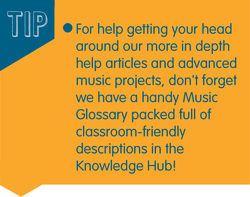
- Try teaching the song following the notation asking pupils to sight-read sections of the songs following the rise and fall of the melody.
- Ask confident singers to lead sectionals - and instrumentalists to accompany.
- Sing rounds, partner songs, and songs in parts - starting with countermelodies and progressing to full homophonic and contrapuntal textures.
- For more advice, check out Simple ways into secondary singing by Ally Daubney.
Words by Leonora Davies and Shelly Ambury.

Involved in music education since 1965, Leonora has taught, was Inspector for Music and Music Services in Haringey, and was Chair of the National Association of Music Educators and the Music Education Council. Now a consultant, Leonora was awarded an MBE for services to education.

Shelly, Sing Up's Head of Learning, has vast experience of music and music education: including working for the BBC and Guildhall School of Music and Drama, singing professionally and leading choirs. She has been a teacher and Head of Music in secondary education.

